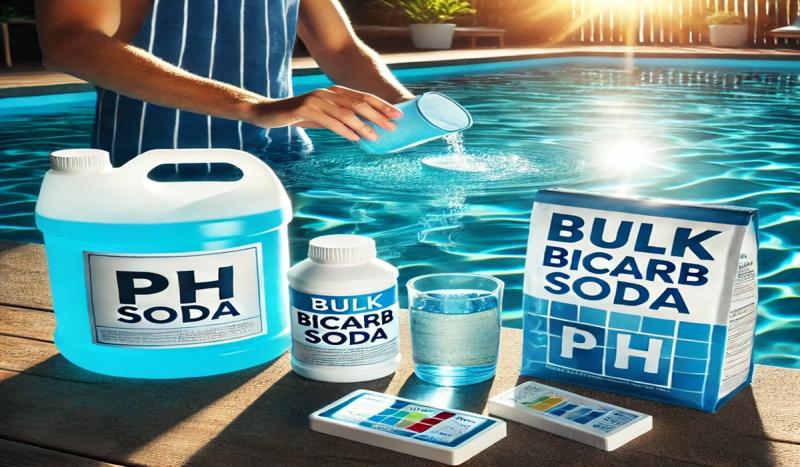How pH Balancing Chemicals Improve Pool Water Quality?

Maintaining the proper pH level in
your swimming pool is essential for keeping the water clean, safe, and
comfortable. One of the most effective ways to regulate pool pH is
by using pH-balancing chemicals like bulk bicarb soda. These chemicals help
maintain the delicate balance of acidity and alkalinity in the water,
preventing issues such as cloudy water, skin irritation, and equipment damage.
Why is pH Balance Important in Pools?
The pH level of your pool water
refers to how acidic or alkaline it is, measured on a scale from 0 to 14.
Ideally, a pool should have a pH level between 7.2 and 7.6. If the pH is too
low (acidic), it can cause eye irritation, corrode pool equipment, and make
chlorine less effective. If the pH is too high (alkaline), it can lead to
scaling, cloudy water, and reduced sanitisation efficiency.
Common pH Balancing Chemicals
There are several chemicals used
to maintain proper pH balance in pools:
- Sodium Bicarbonate (Bicarb Soda) – This is
used to increase total alkalinity, which helps stabilise pH levels.
- Sodium Carbonate (Soda Ash) – Used to raise
pH without significantly affecting alkalinity.
- Muriatic Acid or Dry Acid – These acids
lower pH and total alkalinity when the water becomes too alkaline.
These chemicals are vital in keeping pool water in the ideal range.
How does Bulk Bicarb Soda help Maintain Pool pH?
Bulk bicarb soda (sodium
bicarbonate) is one of the best options for increasing total alkalinity in pool
water. When the alkalinity is at the right level (between 80 and 120 ppm), it
helps prevent rapid pH fluctuations. If your pool’s pH is unstable, adding
bicarb soda will act as a buffer, preventing sudden drops in acidity. This makes pool maintenance easier and helps chlorine work effectively to
kill bacteria and algae.
Signs Your Pool Needs pH Balancing
If your pool water is not
properly balanced, you may notice:
- Cloudy or murky water
- Skin or eye irritation after swimming
- Scaling or corrosion on pool tiles and equipment
- Ineffective chlorine performance, leading to algae
growth
Regularly testing your pool water
with test kits or strips will help detect any imbalances early.
Steps to Adjust pH Levels with pH Balancing
Chemicals
- Test the Water – Use a pool testing kit to
check the pH and alkalinity levels.
- Determine the Required Chemical – If the pH is
too low, add soda ash or bulk bicarb soda to raise it. If the pH is too high,
use muriatic acid or dry acid to lower it.
- Measure and Add the Chemical – Follow the
manufacturer's recommendations for the correct dosage.
- Circulate the Water – Run the pool pump for
several hours to distribute the chemicals evenly.
- Re-test and Adjust if Needed – After a few
hours, test the water again and make necessary adjustments.
Additional Tips for Maintaining Pool Water
Quality
- Monitor pH and Alkalinity Weekly – Frequent
testing helps prevent significant imbalances.
- Keep Your Pool Filter Clean – A clogged
filter can lead to water quality issues.
- Avoid Overuse of Chemicals – Always measure
carefully to prevent overcorrection.
- Shock the Pool as Needed – Regular shocking
helps eliminate bacteria and organic contaminants.
Conclusion
Using pH balancing chemicals like
bulk bicarb soda is crucial for maintaining a clean and safe swimming pool. Regularly testing and adjusting your pool's pH and alkalinity levels ensure the water remains clear, comfortable, and free from harmful
contaminants. Proper pool maintenance extends the life of your pool equipment and enhances the swimming experience for everyone.
Post Your Ad Here
Comments